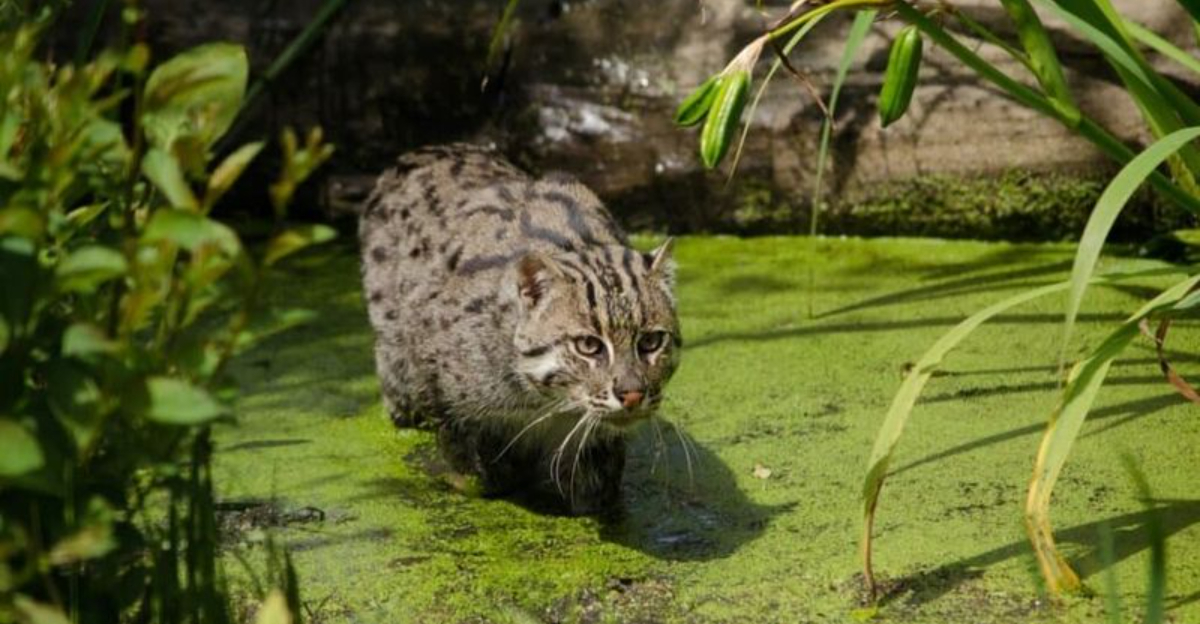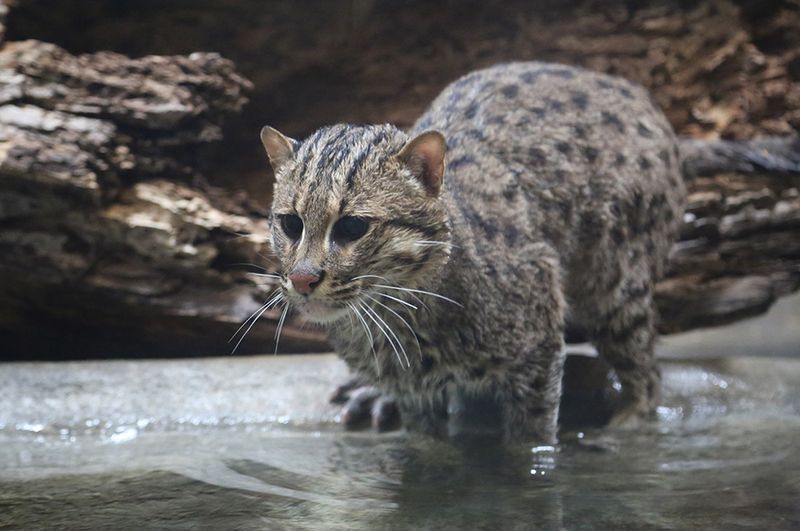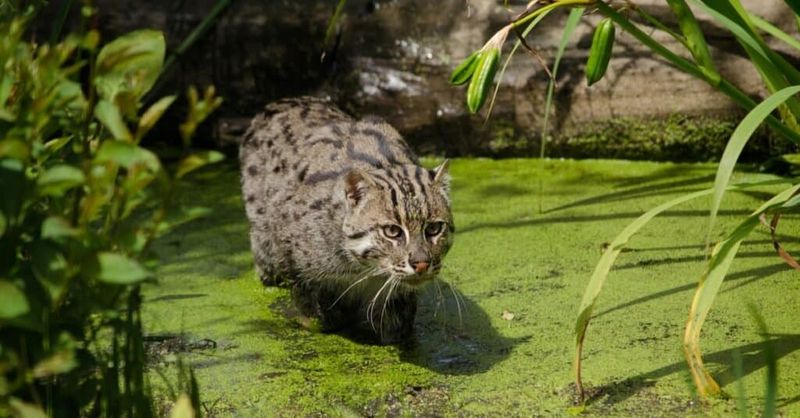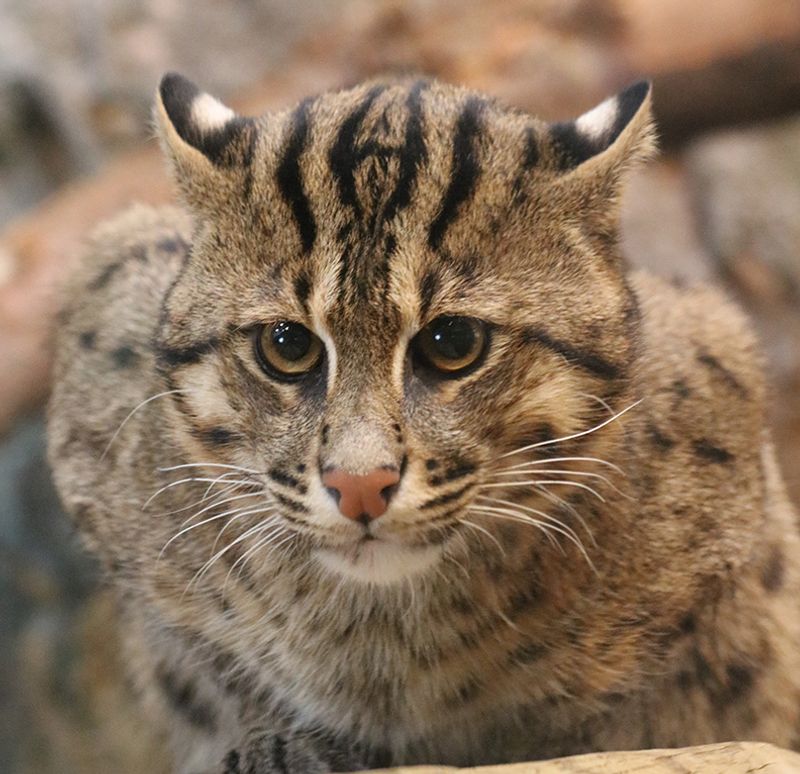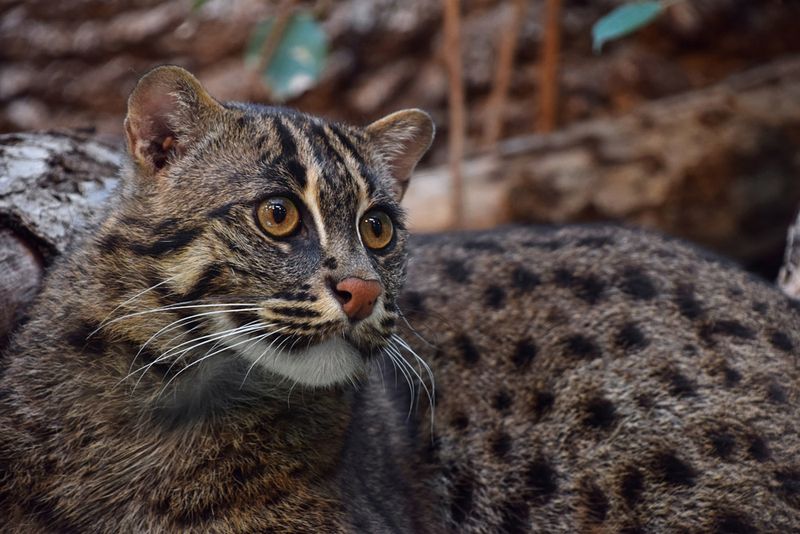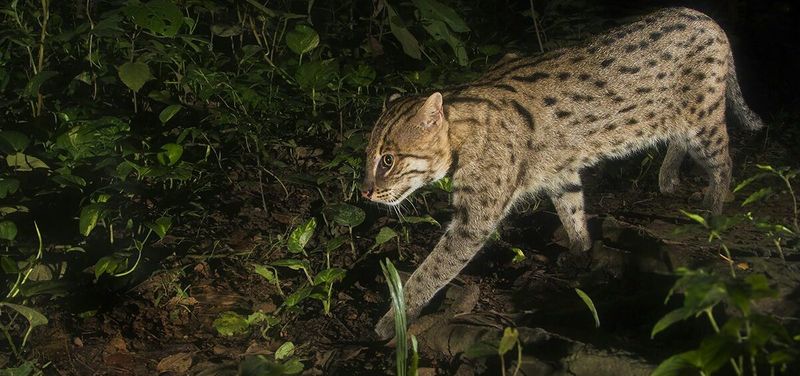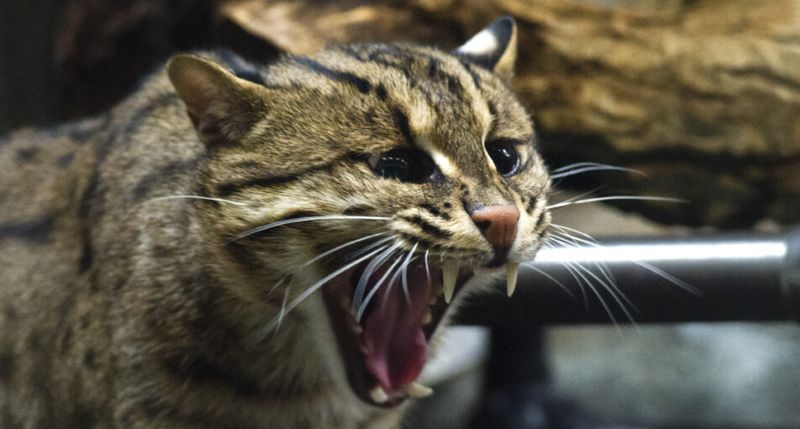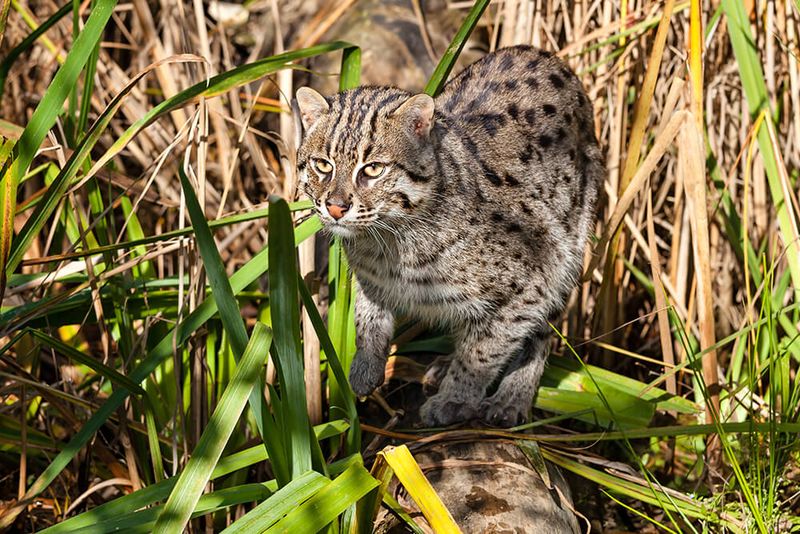📖 Table of Content:
In the wetlands of South and Southeast Asia, a remarkable wild cat prowls, often unseen by human eyes. The fishing cat is a medium-sized feline that defies the common belief that all cats avoid water. This unique predator has adapted to a semi-aquatic lifestyle, setting it apart from its domestic relatives.
Unlike most cats, the fishing cat thrives in wet environments, using its keen hunting skills to catch fish and other aquatic prey. Its webbed feet and strong swimming ability make it an efficient and effective hunter in its watery domain. These adaptations allow the fishing cat to excel in a habitat that many other predators would find challenging.
Despite its fascinating adaptations, the fishing cat is now one of the most endangered cat species on the planet. Habitat loss and human encroachment threaten its survival, making conservation efforts crucial. This elusive and skilled feline is a true testament to the resilience and adaptability of wildlife in even the most challenging environments.
1. Built for Swimming
The fishing cat’s body is custom-designed for aquatic adventures. Their partially webbed paws work like flippers, helping them paddle through water with surprising speed. Short, rudder-like tails provide steering control while swimming.
Unlike most cats, fishing cats have a water-resistant double-layered coat. The outer fur contains guard hairs that repel moisture, while the dense, short undercoat keeps them warm in chilly waters. Their muscular build gives them the power to move against currents.
These adaptations make fishing cats excellent swimmers who don’t just tolerate water – they embrace it as their primary hunting ground.
2. Masters of the Fishing Technique
Few predators demonstrate the patience and precision of fishing cats when hunting. They employ several unique techniques to catch prey in water. The most fascinating method involves lightly tapping the water’s surface with their paw, mimicking insect movements to attract curious fish.
When a fish approaches, the cat strikes with lightning speed, sometimes fully submerging its head underwater. Unlike other cats who fish from shore, these bold hunters frequently wade chest-deep into water.
Their whiskers serve as sensitive detectors for water vibrations, allowing them to locate prey even in murky conditions where visibility is poor.
3. Not Just Fish Eaters
Despite their name and reputation, fishing cats maintain a surprisingly diverse diet. While fish make up roughly 75% of their meals, these opportunistic hunters won’t pass up other protein sources. Frogs, crustaceans, snakes, rodents, and even birds frequently appear on their menu.
During monsoon seasons, when waters rise and fish become more abundant, fishing cats feast primarily on aquatic prey. In drier periods, they adapt by hunting more land-based animals.
Their flexible eating habits have helped them survive in changing environments. Scientists studying their scat samples have even found evidence of scavenging behaviors when hunting proves difficult.
4. Wetland Guardians Under Threat
Fishing cats serve as indicator species for wetland health. Their presence signals a thriving ecosystem with clean water and abundant prey. Unfortunately, wetland destruction has pushed these unique cats toward endangerment.
Across Asia, developers drain marshes for agriculture and urban expansion. Water pollution from industrial waste and pesticides poisons their hunting grounds. Some local communities hunt them for meat or due to conflicts over fish stocks.
Conservation efforts now focus on protecting remaining wetland habitats. In countries like India and Sri Lanka, special reserves have been established specifically to protect these remarkable felines and the ecosystems they help maintain.
5. Solitary Nocturnal Lifestyle
Darkness is when fishing cats truly come alive. These predominantly nocturnal hunters use the cover of night to stalk prey with minimal detection. Their large eyes contain a reflective layer called tapetum lucidum that enhances night vision, making them formidable after-dark predators.
Each fishing cat maintains a territory spanning 2-8 square kilometers, depending on resource availability. Males typically claim larger ranges that may overlap with several females’ territories, especially during breeding season.
During daylight hours, they rest in dense reed beds, hollow trees, or abandoned burrows. Their secretive nature and nighttime activity patterns explain why they remain so rarely observed in the wild.
6. Vocal Repertoire Rivals Domestic Cats
Beneath their fierce appearance, fishing cats possess a surprisingly complex vocal range. Researchers have documented at least ten distinct vocalizations, from soft chirps to bone-chilling growls. During mating season, males produce a unique “chuckling” call that carries across wetlands.
Their most distinctive sound resembles a loud “chuckling” bark when threatened, quite unlike typical feline hisses or growls. Mother fishing cats communicate with kittens through gentle chirps and purrs.
These vocalizations help maintain territories and coordinate between mothers and young. Scientists use audio recording devices in conservation areas to monitor populations without disturbing these elusive cats in their natural habitat.
7. Twice the Size of House Cats
Many people underestimate the fishing cat’s impressive stature. Weighing between 11-35 pounds and measuring up to 31 inches in body length (plus a 10-inch tail), they’re substantially larger than the average house cat. Males typically outweigh females by about 30%.
Their stocky, muscular build gives them a somewhat stocky appearance compared to other wild cats. Short legs provide stability in muddy wetlands, while powerful shoulders and neck muscles allow them to subdue struggling fish.
The fishing cat’s head appears disproportionately large for its body, housing powerful jaw muscles needed to crush the skulls of prey. Their robust physique represents perfect adaptation to their demanding semi-aquatic lifestyle.
8. Raising Water-Loving Kittens
Fishing cat mothers invest tremendous energy in raising their young. After a 63-day pregnancy, females give birth to 1-4 kittens in secluded dens among dense vegetation. Born blind and helpless, kittens depend entirely on their mother’s protection and rich milk.
Unlike domestic kittens, young fishing cats must learn specialized hunting techniques. At around two months, mothers begin bringing small live fish for practice sessions in shallow pools. This apprenticeship continues for nearly a year.
By ten months, juveniles start exploring independently but may stay within their mother’s territory until fully mature at 15 months. This extended learning period ensures they master the complex skills needed for survival in wetland environments.
